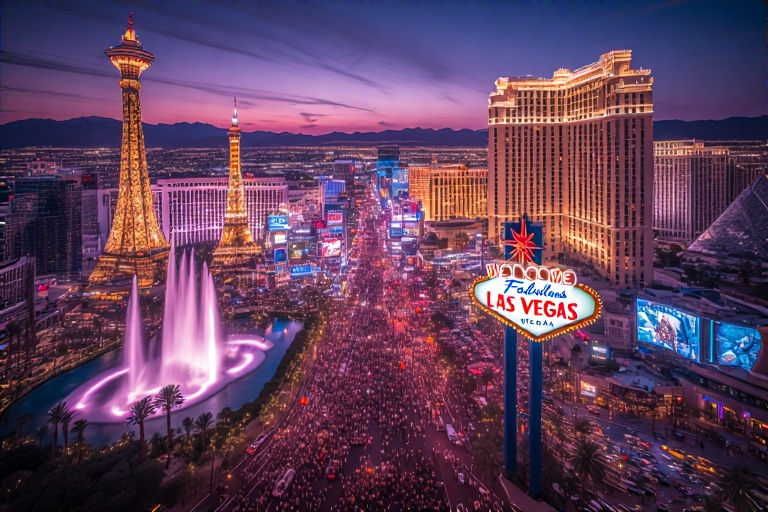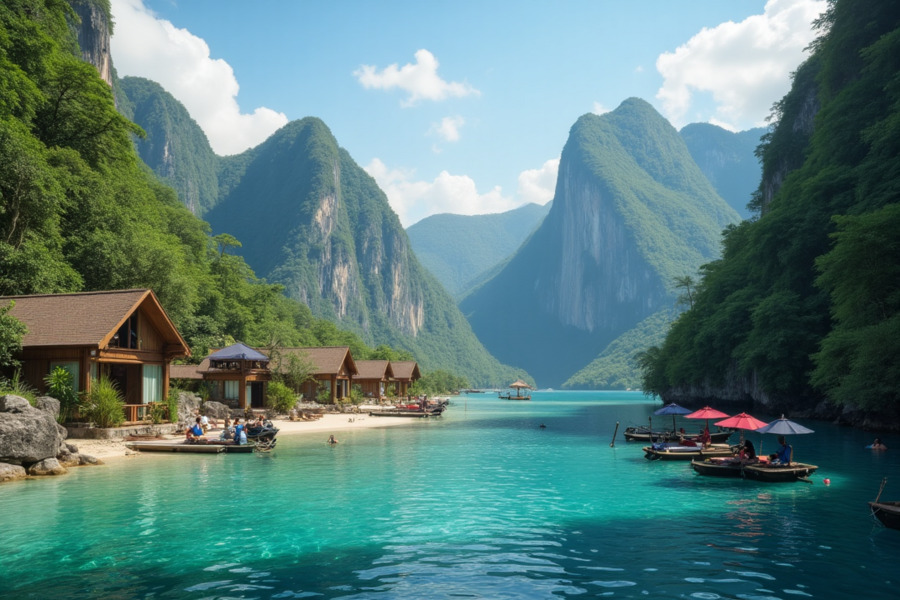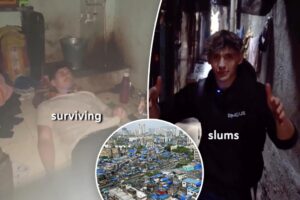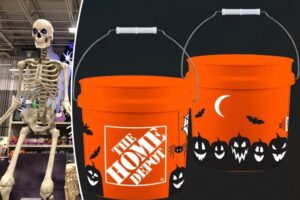≡-Las Vegas Joins Houston, New Orleans, Phoenix, San Francisco, Oakland, and More in the US Tourism Slump as Travel and Hotel Demand Continue to Drop – Viral of Today
<> Viral of Today <>
Home
»
America Travel News
»
Las Vegas Joins Houston, New Orleans, Phoenix, San Francisco, Oakland, and More in the US Tourism Slump as Travel and Hotel Demand Continue to Drop
Thursday, July 24, 2025
Las Vegas has joined Houston, New Orleans, Phoenix, San Francisco, Oakland, San Diego, and San Jose in a nascent 2025 U.S. tourism slump, with hotel occupancy dropping and travel demand ebbing nationwide. From Nevada’s entertainment capital to the urban centers of California and deep into the South and Southwest, industry data for June and July show steep year-over-year downturns—some as high as 20 percent—in room bookings, daily rates, and overall visitor volume. Although some cities, such as San Francisco, have demonstrated localized gains, most destinations are grappling with the cumulative effects of lackluster business travel, fewer international tourists, an economy roiled by uncertainty, and shifting traveler behavior that has undermined what was expected to be a peak recovery season for the nation’s hospitality industry.
Las Vegas Loses Its Shine as Visitor Numbers Drop Sharply in Summer 2025
Las Vegas, a longtime symbol of American leisure and entertainment, has seen hotel occupancy plunge. In June 2025, occupancy dropped 14.9% year-over-year, and early July data shows further declines to 66.7%. Analysts anticipate total summer losses may reach 20% compared to the same period in 2024. These numbers are raising alarm among hoteliers and tourism agencies alike, particularly as the city continues to rely heavily on volume-driven revenue from midweek conventions and weekend getaways.
The slump has been attributed to a decline in Canadian and international arrivals, reduced demand from business travelers, and growing budget sensitivity among domestic tourists. With many visitors now favoring less expensive or more flexible destinations, Las Vegas is fighting to hold onto its status as a top-tier travel hub. While properties remain open and promotional campaigns are underway, the city faces a difficult path through the remainder of the high season.
California’s Tourism Divide Widens as San Francisco Climbs and Others Stall
San Diego experienced a notable dip in demand. In June 2025, hotel occupancy dropped to 71.6%, representing a 13.8-point drop from the previous year. Although the first week of July saw a temporary boost to 81.2%, the second week reversed that momentum, sliding back to 76.1%—a 3.9% year-over-year decrease. This inconsistency highlights the fragile nature of post-pandemic recovery in leisure-heavy markets.
Much of the instability in San Diego’s hospitality sector can be linked to patchy business travel, less robust convention bookings, and increased traveler caution around discretionary spending. While weekends still draw decent leisure traffic, weekdays remain underbooked, and overall revenue per available room continues to trail projections. Industry leaders warn that unless weekday volume picks up, recovery will remain inconsistent heading into the fall.
San Francisco continues to be a bright spot. The city posted a 72.2% occupancy rate in June—up 17.2% year-over-year—and continued to grow into July. For the week of July 13–19, occupancy reached 77.2%, marking the highest performance gain among STR’s top 25 U.S. hotel markets. The city is also seeing stronger average daily rates and higher room revenue compared to earlier in the year.
This resurgence is being driven by a comeback in international travel, large-scale downtown events, and a steady stream of corporate visitors returning for conferences. The city’s appeal as a cultural and tech hub continues to give it an edge, even as other parts of California remain in flux. San Francisco’s relative stability underscores how localized tourism recovery can be within a single state.
San Jose remains sluggish. According to available Airbnb data, median occupancy sits at around 59%, with lower-tier listings performing as low as 28% and higher-end accommodations reaching about 64%. Hotel data mirrors these struggles, showing the region is lagging behind California peers in filling rooms consistently.
With fewer major tech events, limited corporate travel, and a shift toward remote work, the city’s once-strong business travel foundation has weakened. As a result, hospitality businesses are struggling to attract weekday bookings and retain pre-pandemic pricing power. San Jose continues to search for ways to reignite its visitor economy in the face of structural change.
Oakland remains largely without updated occupancy data, but anecdotal insights suggest it continues to underperform. Compared to San Francisco, the city has seen fewer signs of recovery, especially in hotel demand, visitor spending, and travel-driven business activity. Concerns around safety and a lack of high-profile events have slowed the return of regular tourism.
Without a robust marketing push or new economic drivers to anchor the travel sector, Oakland risks being left behind in California’s broader tourism recovery. The city’s hospitality market remains dependent on weekend leisure travel and short-term regional guests but lacks the infrastructure and image necessary to capture major market share from returning international or business travelers.
Houston Hotels Hit Rock Bottom with Steepest Occupancy Drop in the US
Houston has been hit hard by the summer slump. For the week ending July 12, 2025, hotel occupancy fell by 20.0% year-over-year, dropping to just 57.7%. At the same time, the average daily rate fell 17.6% to $114.55, and revenue per available room (RevPAR) sank by a staggering 34.2% to $66.05. These numbers positioned Houston as the worst-performing city among STR’s top 25 U.S. hotel markets for that week.
Analysts link this sharp decline to a combination of weak convention business, declining corporate travel, and limited summer events. As one of the most conference-reliant cities in the southern U.S., Houston has struggled to recover its pre-pandemic event calendar. The tourism bureau is now reassessing its promotion strategy, but with fewer anchor events, the road to recovery appears steep.
New Orleans Faces Bleakest Summer Yet with Lowest Hotel Bookings Nationwide
New Orleans saw the worst June 2025 hotel occupancy performance among the top 25 U.S. markets. Occupancy fell to 53.8%, a significant decline that puts the city far below national averages. While the Big Easy traditionally leans on festivals and cultural events to draw visitors, this summer has seen a scaled-back calendar and thinner crowds across the board.
Part of the slump is attributed to fewer international flights, a drop in spending from domestic tourists, and limited midweek tourism volume. Hotel operators report shorter stays, lower per-night spending, and fewer group bookings. Without a major resurgence in events like Essence Fest or large conventions, tourism businesses across New Orleans are bracing for an extended slowdown.
Phoenix Struggles Through Heat and Empty Rooms as Tourists Stay Away
Phoenix was the second-lowest performing city for June 2025, with hotel occupancy dropping to 59.5%. Compared to previous years, that figure reflects a sharp dip, as the city typically attracts summer travelers through affordable rates and desert-adventure tourism. However, record-breaking heatwaves and weaker convention activity have kept many tourists away this season.
Industry watchers say the city’s reliance on budget-conscious travelers has become a vulnerability. As inflation continues to pinch household budgets, vacationers are opting for closer-to-home destinations or deferring summer trips altogether. Without a strong influx of group business or events, Phoenix’s hospitality sector is expected to remain under pressure through August.
Las Vegas has now joined Houston, New Orleans, Phoenix, San Francisco, Oakland, San Diego, and San Jose in a growing 2025 U.S. tourism slump, as travel and hotel demand continue to fall nationwide. Economic uncertainty, weaker business travel, fewer international arrivals, and shifting traveler habits are dragging down what was expected to be a peak recovery season.
America’s Urban Tourism Slips Further as Summer Recovery Falls Short
Together, these cities illustrate a nationwide cooling in tourism demand, especially across urban centers. Las Vegas, Houston, New Orleans, Phoenix, and several cities in California are seeing sustained declines in occupancy and hotel revenue. While places like San Francisco are rebounding with strong corporate and international interest, they are the exception, not the rule.
Travel experts warn that if these downward trends continue into autumn, the broader hospitality industry may face serious revenue gaps. Local tourism boards are being urged to act quickly—launching targeted promotions, securing events, and exploring new markets—before the slowdown deepens into a long-term downturn.
This information will surprise you!
See also
- Read until the end to discover everything.
- Important information you need to know.
- Interesting facts and helpful tips.
Conclusion
Did you enjoy the news? Keep following us daily!













